Why You Need to Visit the Impressive Edinburgh Castle
(But why it’s not the best castle in Scotland)
Edinburgh Castle is definitely high on the list of things to do in Scotland’s capital city.
It’s hard to miss the castle as it sits up on this hunk of volcanic rock.
There has been some sort of castle or fortress on this site since around the 12th century.
But it’s quite possible it was occupied well before that.
Anyway.
This is Scotland’s most visited site with an estimated 2.2 million visitors in 2019 (the good ol’ pre-COVID days).
And while I do think Edinburgh Castle is worthy of your time, I will say that it may be slightly overrated.
I’ll come to that at the end with some of my tips on visiting this popular site.
Let’s start by putting Edinburgh and its castle on the map.
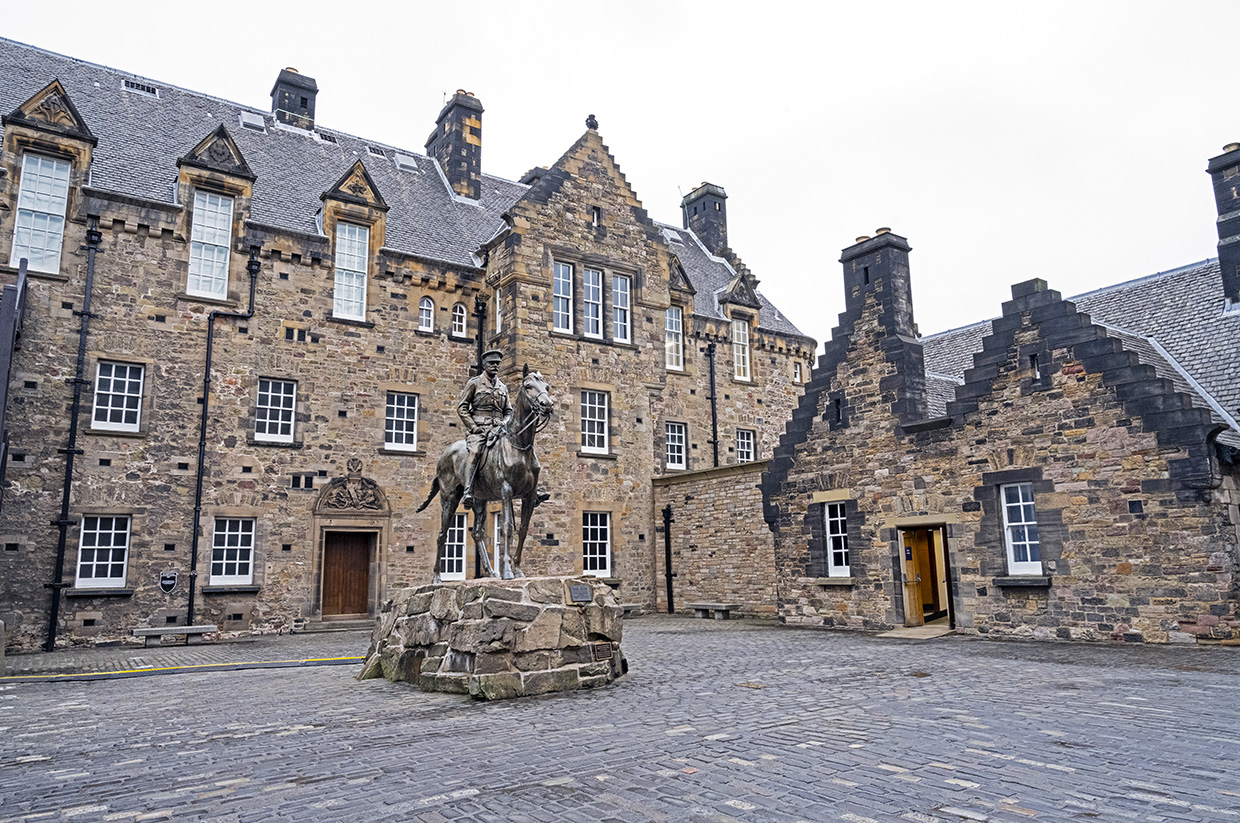
Where is Edinburgh and Edinburgh Castle?
Edinburgh is considered to be in the Lowlands of Scotland.
It sits on the eastern side of the country and on the Firth (inlet from the sea) of Forth.
There is an Old Town which is where you’ll find Edinburgh Castle and the Royal Mile.
And Edinburgh has the Georgian New Town which dates to the mid 18th to 19th centuries.
So the term “new” is relative!
While Edinburgh is the capital, it is Glasgow that has the most people.
The Castle sits at one end of the Royal Mile — the western end up on the hunk of rock — and Holyrood Palace sits at the eastern end.
So if you start by Holyrood Palace, be prepared to walk uphill.
Well, it be a bit uphill to get to the castle no matter where you are in Edinburgh!
History of the Castle
The exact date of when a castle or a fortress came to be on this hunk of rock in not known for sure.
There seems to be some mention of a castle as early as the late 9th century but it’s not until the 12th century during the reign of David I (who reigned from 1124-1153) that we definitely hear of a castle in Edinburgh.
Most of the buildings that would have existed then are no longer around as they would have been made from wood.
There are 2 buildings that were made of stone — a church dedicated to St Mary which is now where the Scottish National War Memorial is and St Margaret’s Chapel which actually still exists.
St Margaret’s Chapel — a very tiny building — is the oldest building in Edinburgh.
We’ll get to this site a bit later.
The Castle served as the royal residence until approximately 1633 when it became more of a military barracks.
At that time the royal residence moved down the Royal Mile to Holyrood Palace as it was a more comfortable place to live.
Because of its importance as a Scottish stronghold Edinburgh Castle has seen lots of conflicts over the years from the Wars of Scottish Independence in the 14th century to the Jacobite rising of 1745.
In fact Edinburgh Castle has the dubious distinction of being the most besieged place in Great Britain.
Naturally, because of this, few of the buildings you see today pre-date the 16th century except for St Margaret’s Chapel, the Royal Palace and the early 16th century Great Hall.
The British Army is still responsible for some parts of the castle but its role is now mostly ceremonial and administrative.
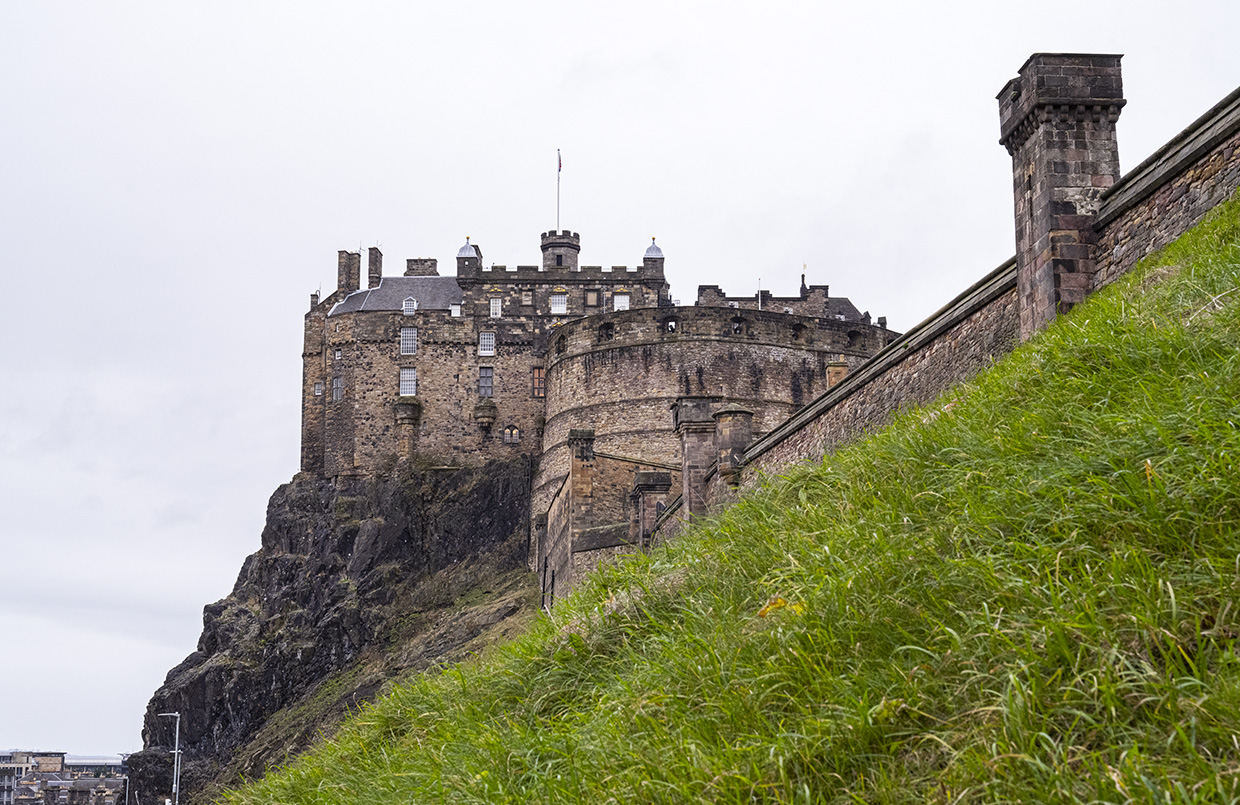
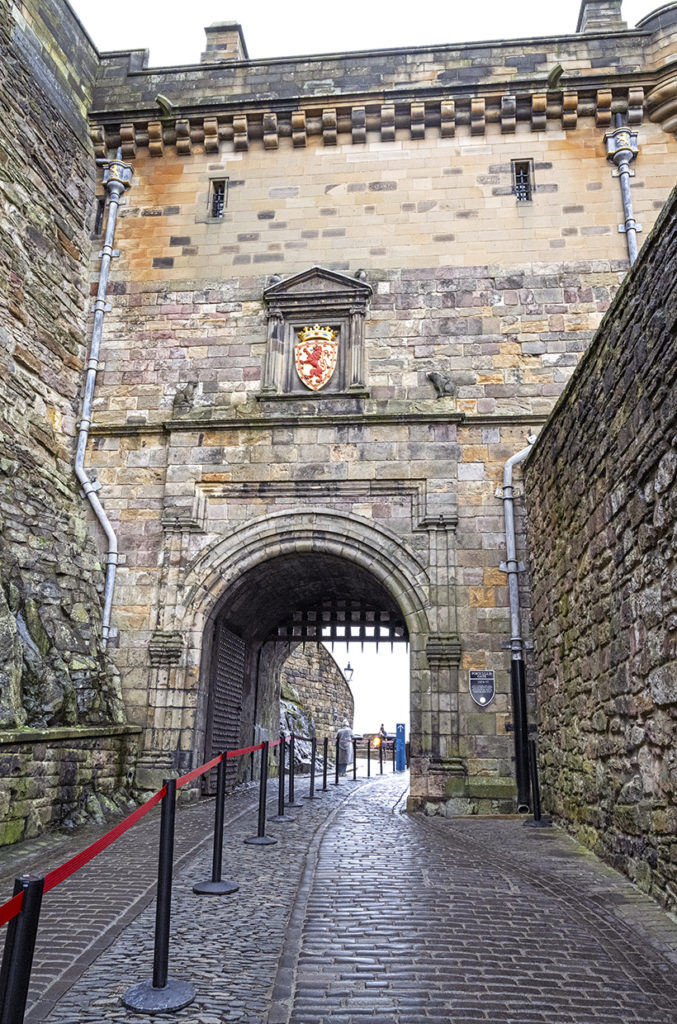
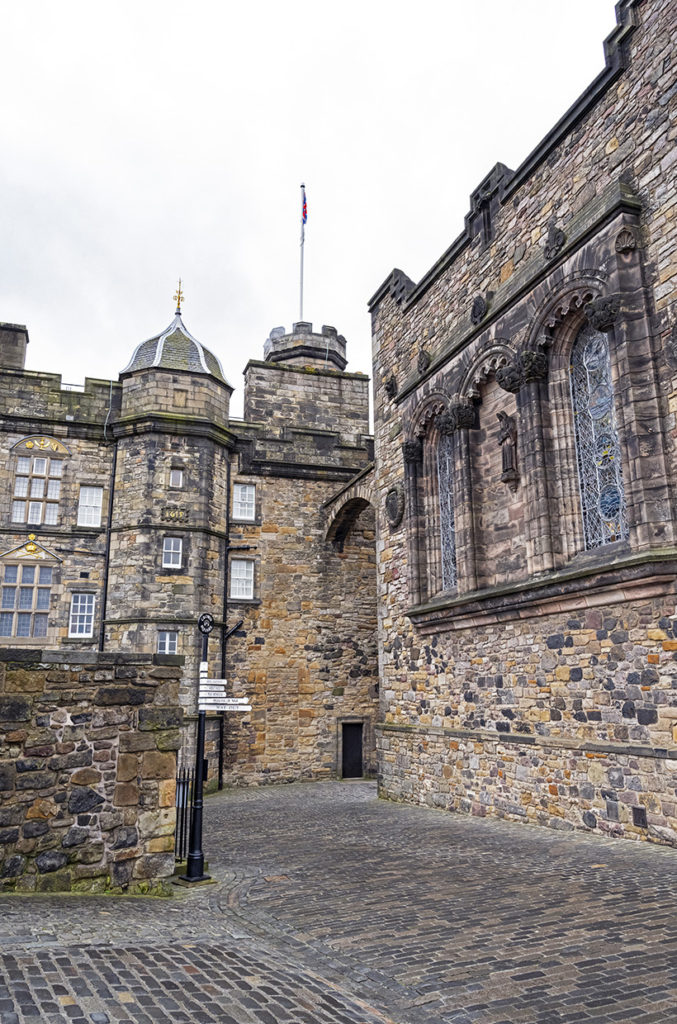
What to see at Edinburgh Castle
The views
I have to start with the amazing views from the Castle.
At every level, you’ll get some fabulous views of the city and out to the Firth of Forth and even to the sea.
So one tip I have is simply to stop and take in those views when you get them.
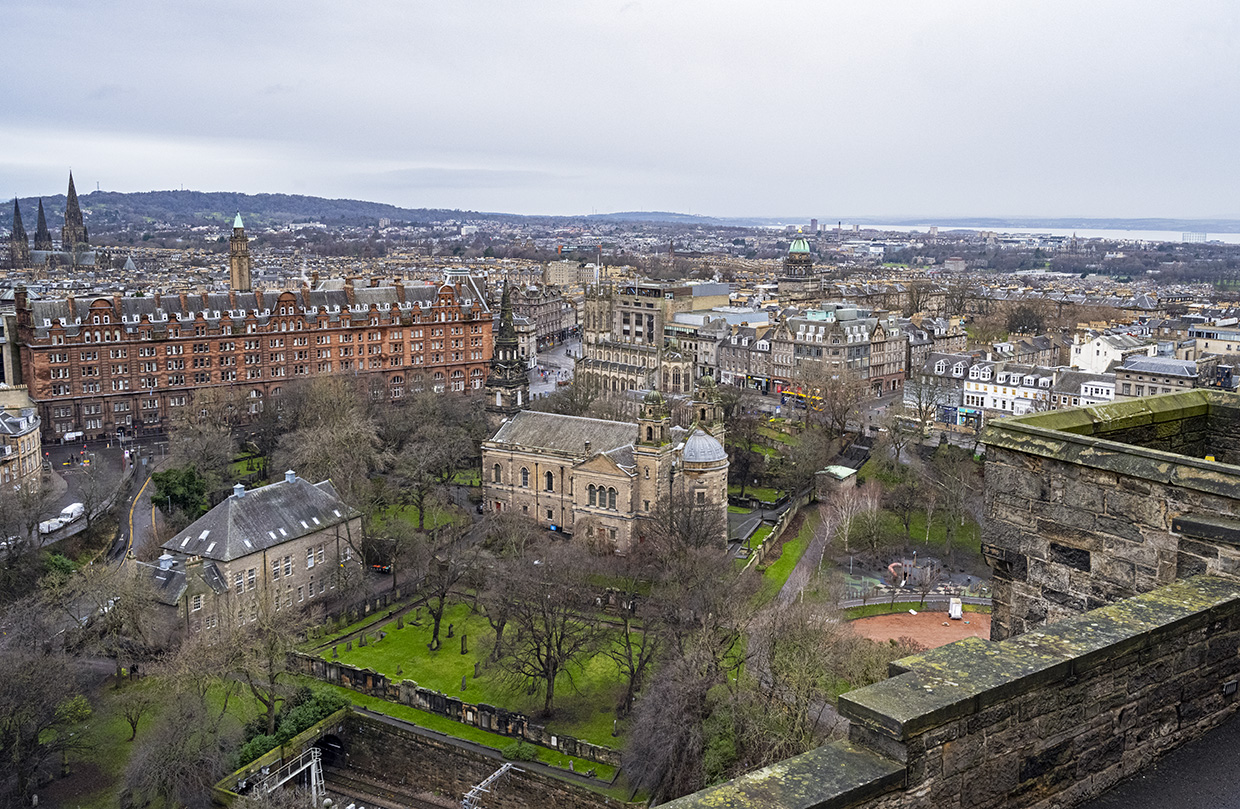
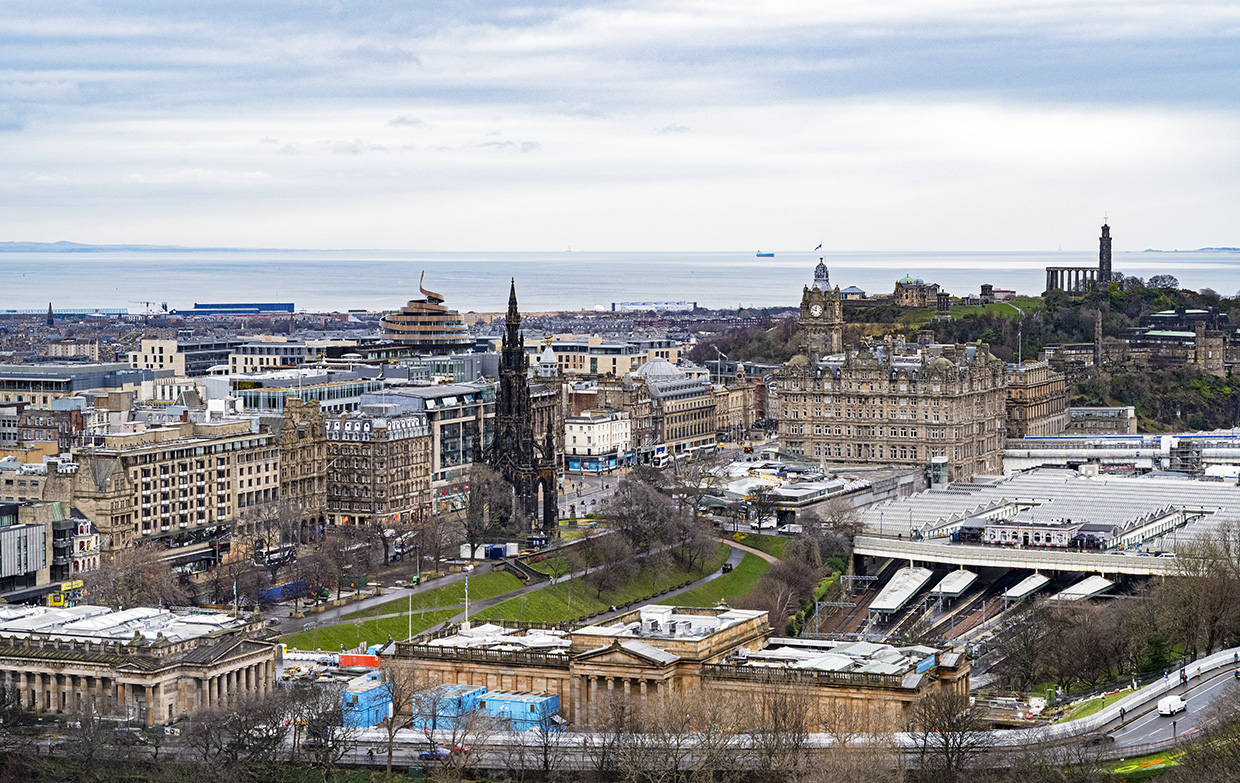
The Argyle Battery and the One O’Clock Gun
One of the first places you come to is the Argyle Battery.
This is where you see the cannons peeping through the wee windows.
It’s a fun place to get some pics and take in the views.
At the top of the battery is the One O’Clock Gun.
This gun is fired every day at 1:00pm, except Sundays, Good Friday and Christmas Day.
It was first put into use in 1861 as a means to help the sailors figure out longitude thus making their navigation more precise.
Obviously it now isn’t needed, but it still is fired.
If you want to be there for this occasion, be sure to get there early as it’s a popular time at Edinburgh Castle.
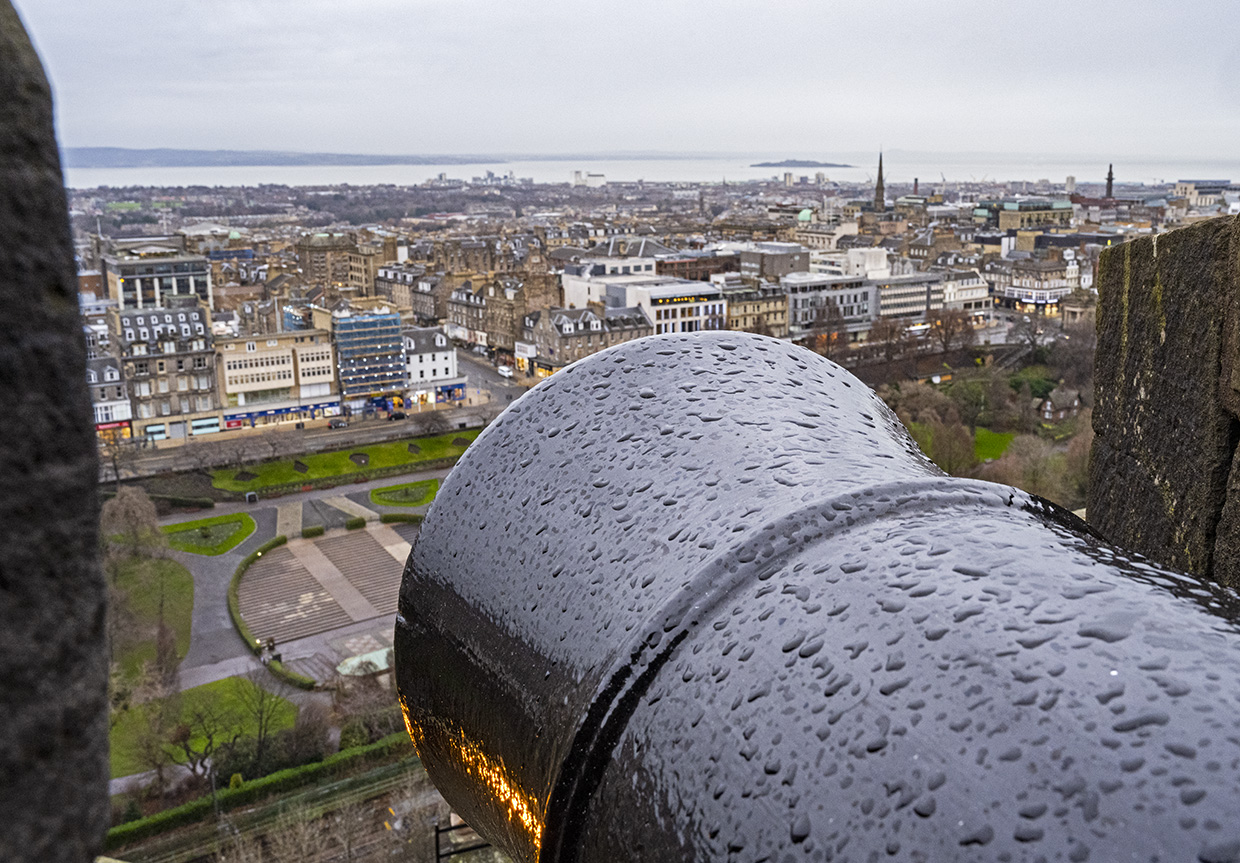
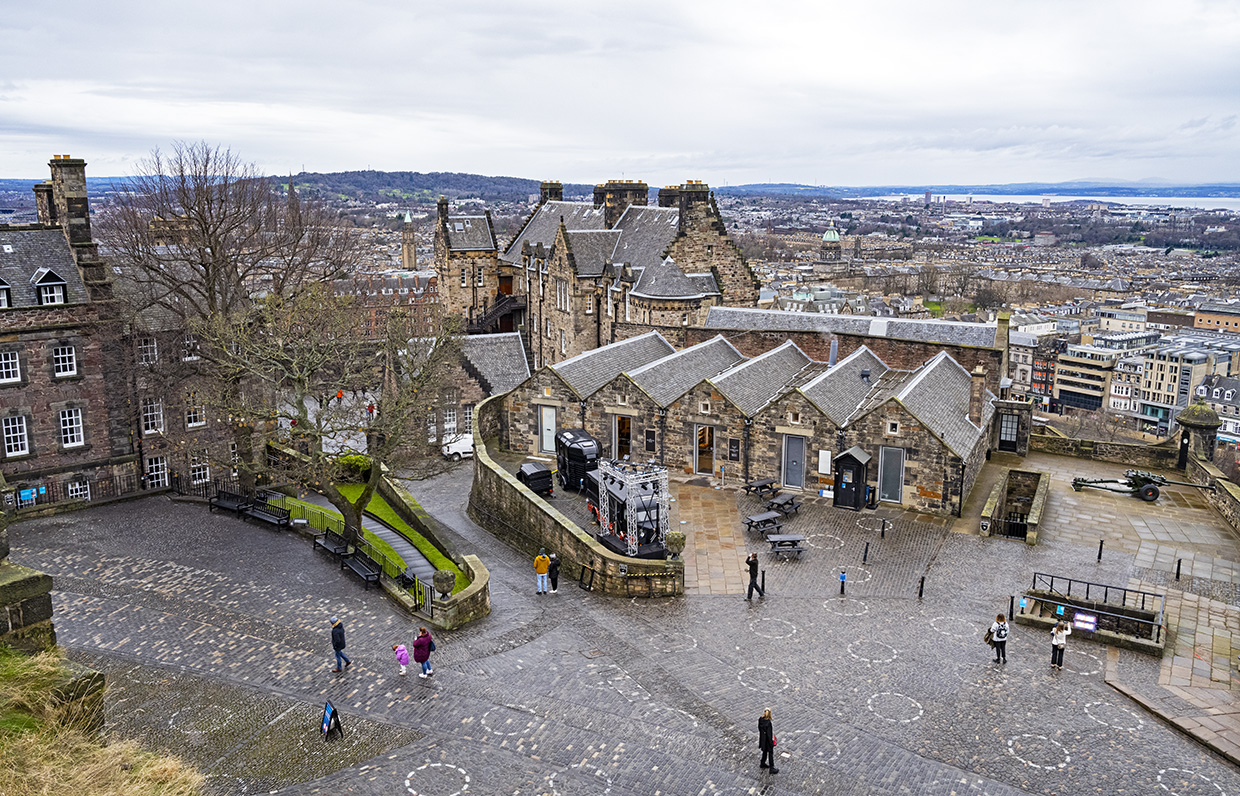
The Honors of Scotland
The most popular stop is to see the Honors of Scotland which is basically the crown jewels and the Stone of Destiny.
And this will most likely be where you’ll have to wait in a queue to see them.
However, since I visited in January during the omicron COVID surge, I waltzed right in.
I’ll offer up some tips at the end of the post for your visit.
Anyway…
Since you aren’t allowed to take photos, I have no pics of these.
But the crown, scepter and sword are all impressive and date back to the mid-1500’s.
The other item in this room is the Stone of Destiny which I think is the coolest relic here.
It’s one of those items from history that has some fun stories and myths to it.
The Stone of Destiny has been part of both Scottish and English history and part of the royal coronation chair that Henry VIII, Elizabeth I, Victoria and Elizabeth II sat in.
The stone is from the Perthshire region of Scotland.
It was kept here until Edward I of England invaded Scotland in 1296, “found” the stone and took it to symbolize his conquest of Scotland.
He had it set into the wooden coronation chair in Westminster Abbey.
So the Stone of Destiny remained in England for a long time despite the fact that the Scots wanted it back, feeling — rightfully so in my opinion — that it was a part of Scottish history.
It was “stolen” back to Scotland in 1950 but had to be returned to England.
Seriously, some Scottish nationalists broke into Westminster Abbey and stole it.
There’s a 2008 movie called Stone of Destiny worth watching about this courageous endeavor.
Finally the Stone made its way back to Scotland in 1996 under great pomp.
The Stone of Destiny was home at last.
So for me, as impressive as the crown, scepter and sword are, the Stone of Destiny may be even more so.

Royal Palace
The Royal Palace was where the Stewart family stayed.
The oldest parts date back to the 1400’s although it’s been added to and altered over the years.
Mary, Queen of Scots gave birth to the future King James VI in 1566 in a very small room, known as the Birth Room.
You can visit this room but it wasn’t open at the time of my visit.
I understand it’s very very small!
There are a few rooms you can visit after the Honors room that have lots of wood, large fireplaces and coats of arms.
One of the rooms I really liked at the Royal Palace (which I swore I took photos of but don’t seem to have any) is the one with all the portraits of all the royals from Mary Queen of Scots onward.
It gives a great sense of the lineage and history.
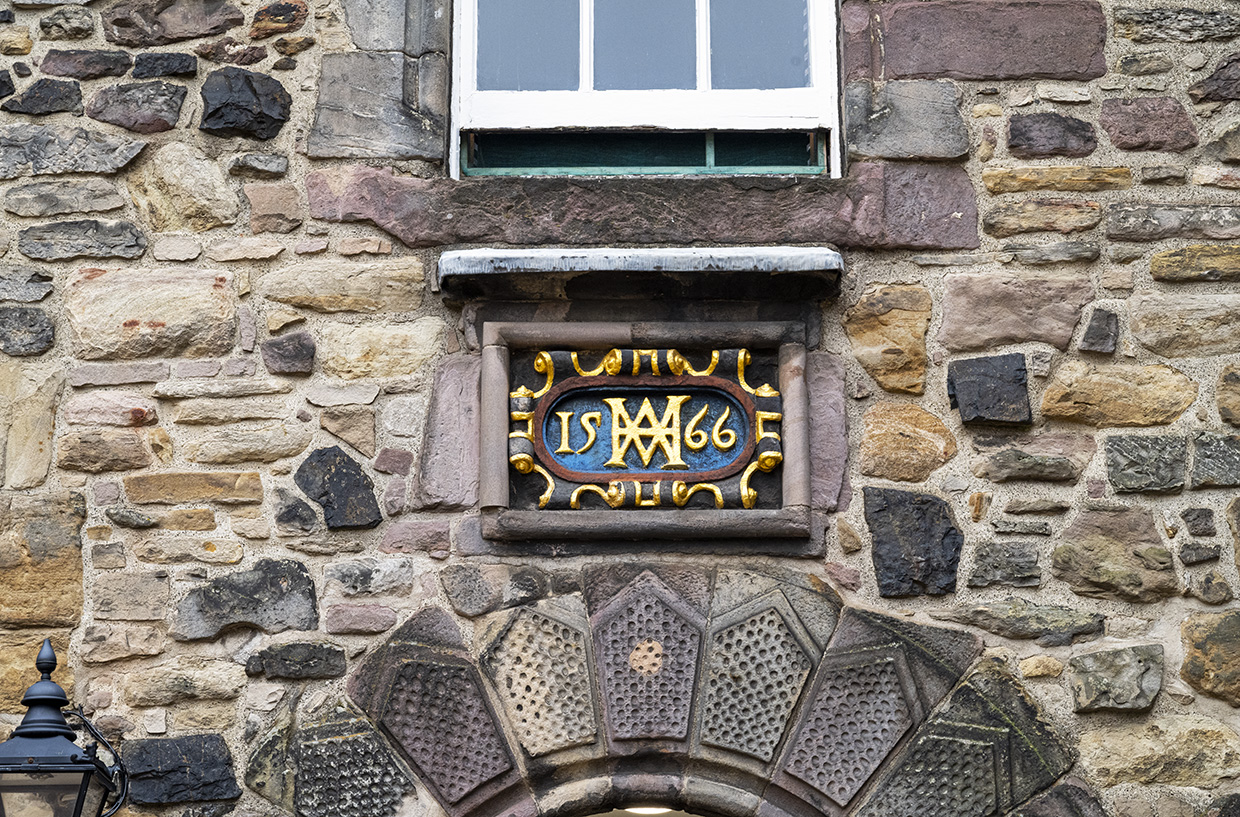
The Great Hall
One of my favorite buildings is the Great Hall.
It’s one of the early buildings that still exists though the interior has been renovated quite a bit.
However, the oak and pine wooden beams are the original from the 16th century.
I think this is incredibly impressive.
Most of the stone brackets are original too.
And it is said that this room was an inspiration for JK Rowling’s Great Hall of Hogwarts for her Harry Potter books.
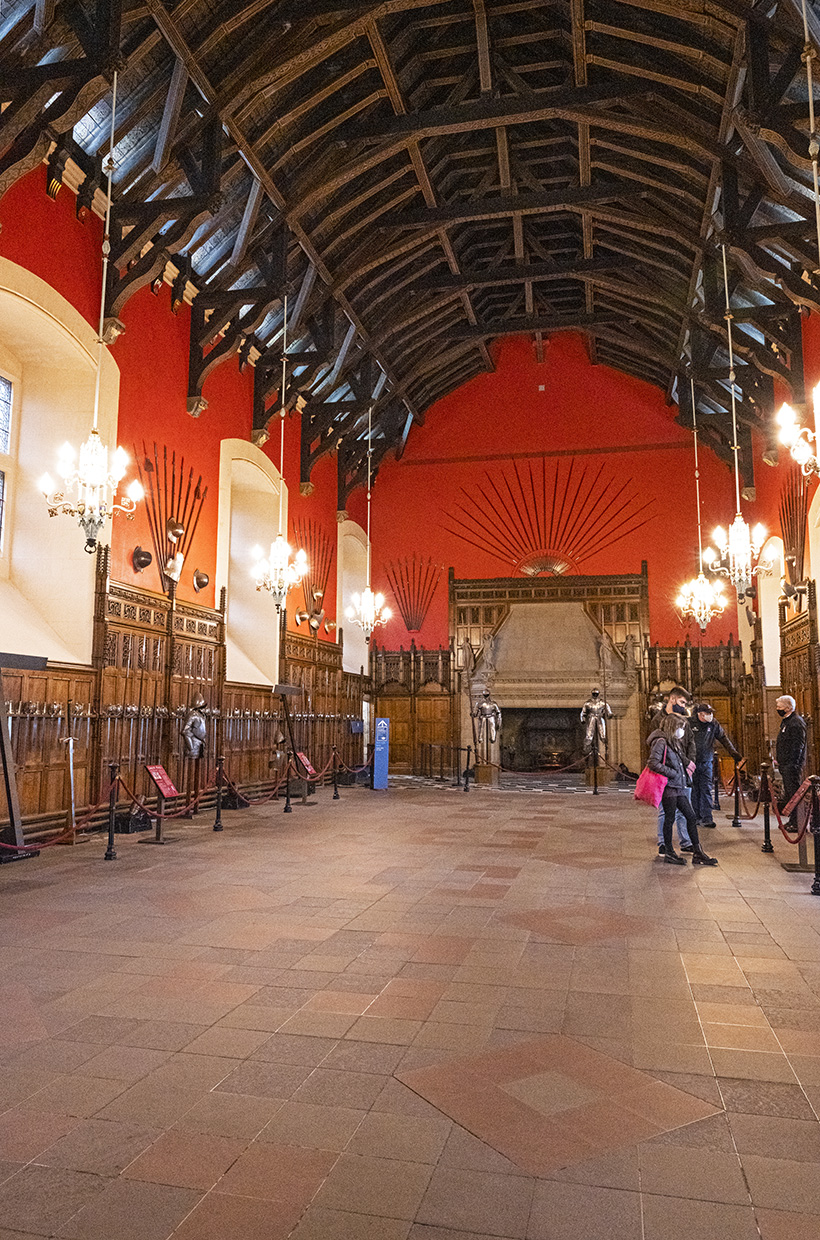
Widget not in any sidebars
Crown Square
This is the square where you will find the above buildings.
Well into the 1500’s this would have been the center of activity with all kinds of people in the square.
It’s a wonderful spot to slow down, take a good look around, imagine what life would have been like back in the height of its time.
Gaze at the buildings and notice some of the small things on the buildings.
It’s a lovely spot for sure.
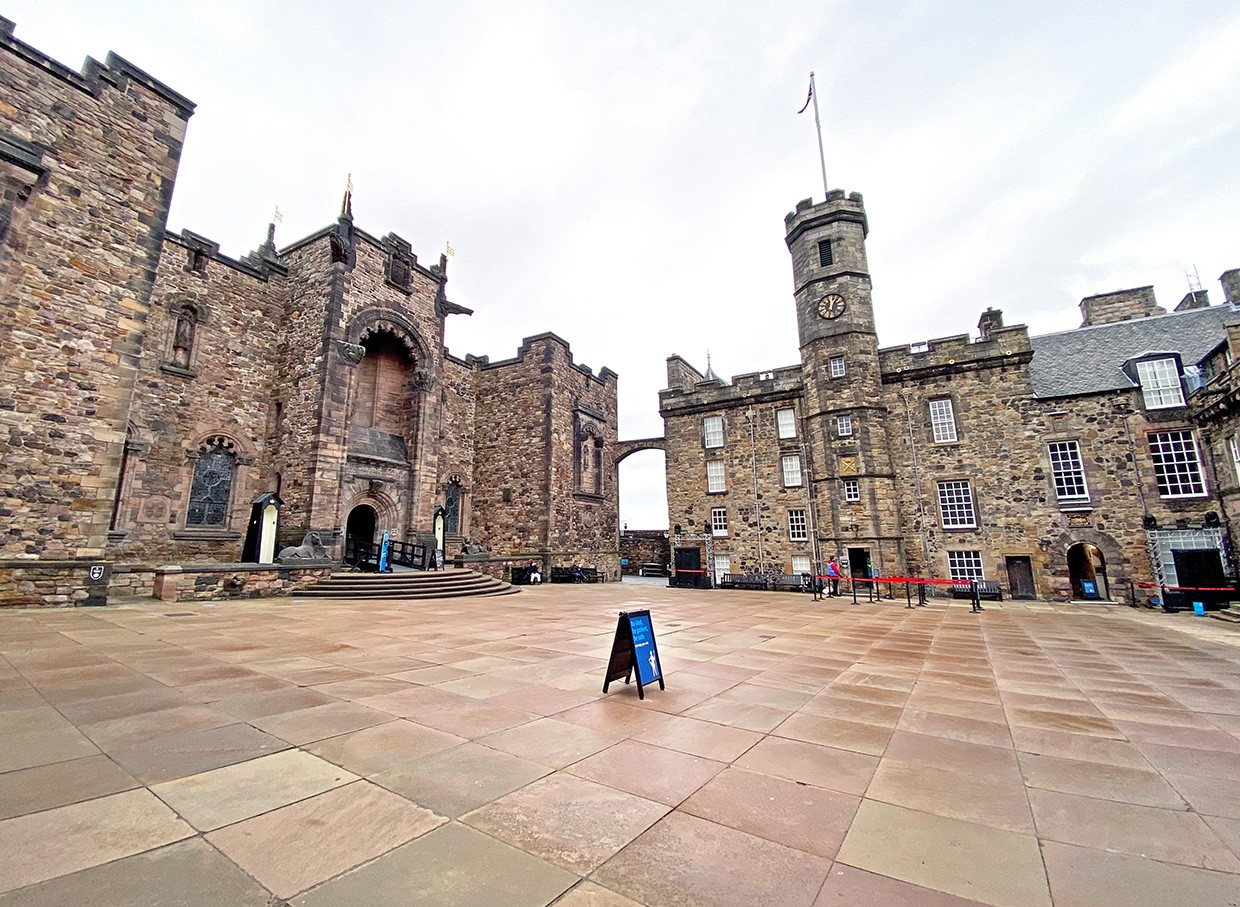
National War Museum
One of the best spots to visit at Edinburgh Castle is the National War Museum.
The building is located in Hospital Square and houses a lot of military artifacts such as uniforms, weapons and medals.
You also learn about the history and causes behind the many wars soldiers from Scotland have been a part of.
I think this is an excellent museum and one of the most interesting parts of the Castle.
I particularly enjoy looking at some of the old documents and letters as well as the swords.
Yes, very different!
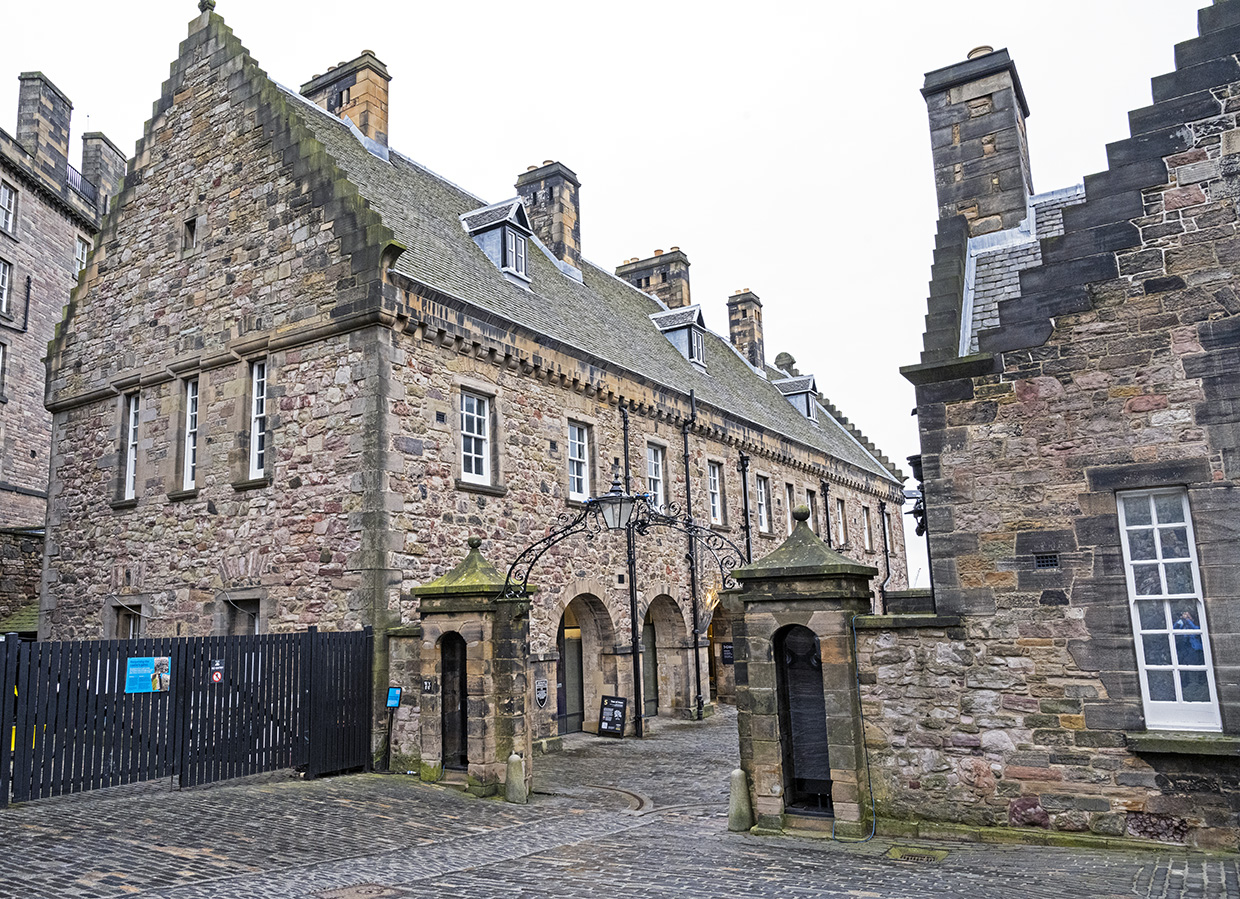
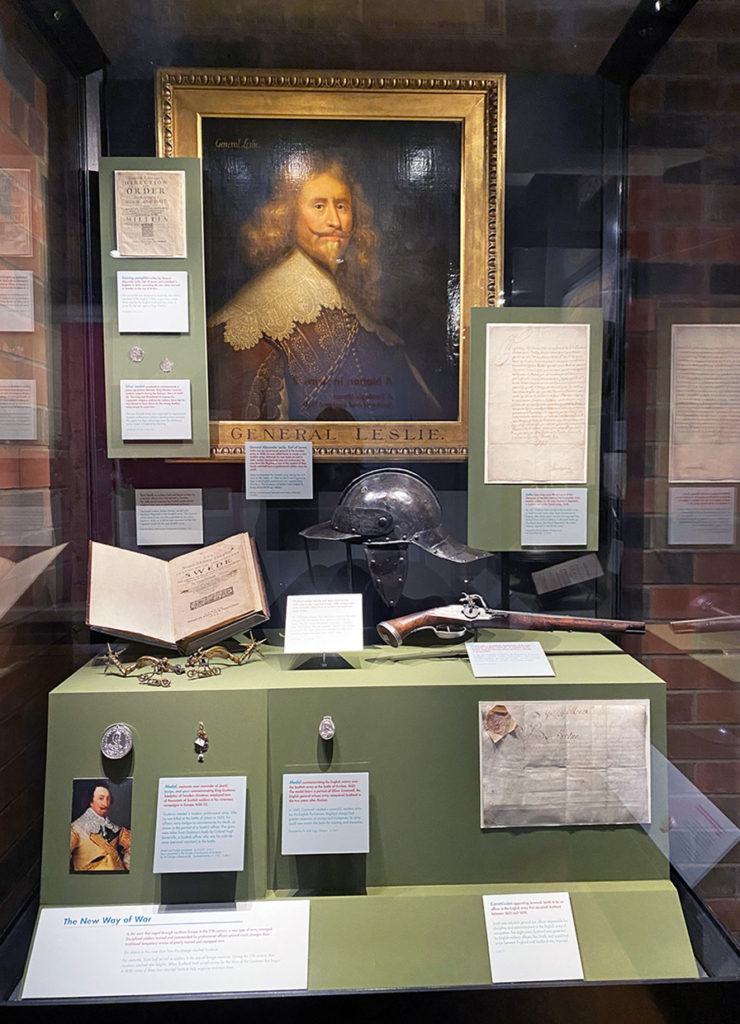
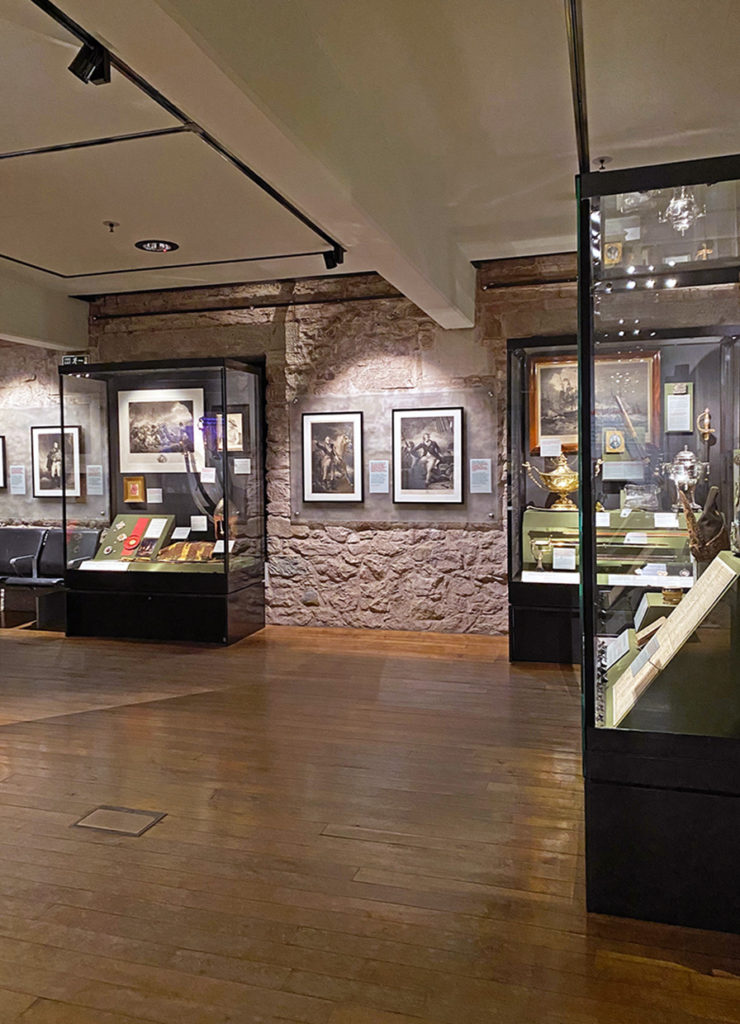
Prisons of War
The most depressing part of Edinburgh Castle are the prisons of war.
It would have sucked to be stuck here!
But it is an interesting stop on the tour.
It’s 2 stories underground and dark and dank.
Yup.
Depressing.
But very worthy of seeing.
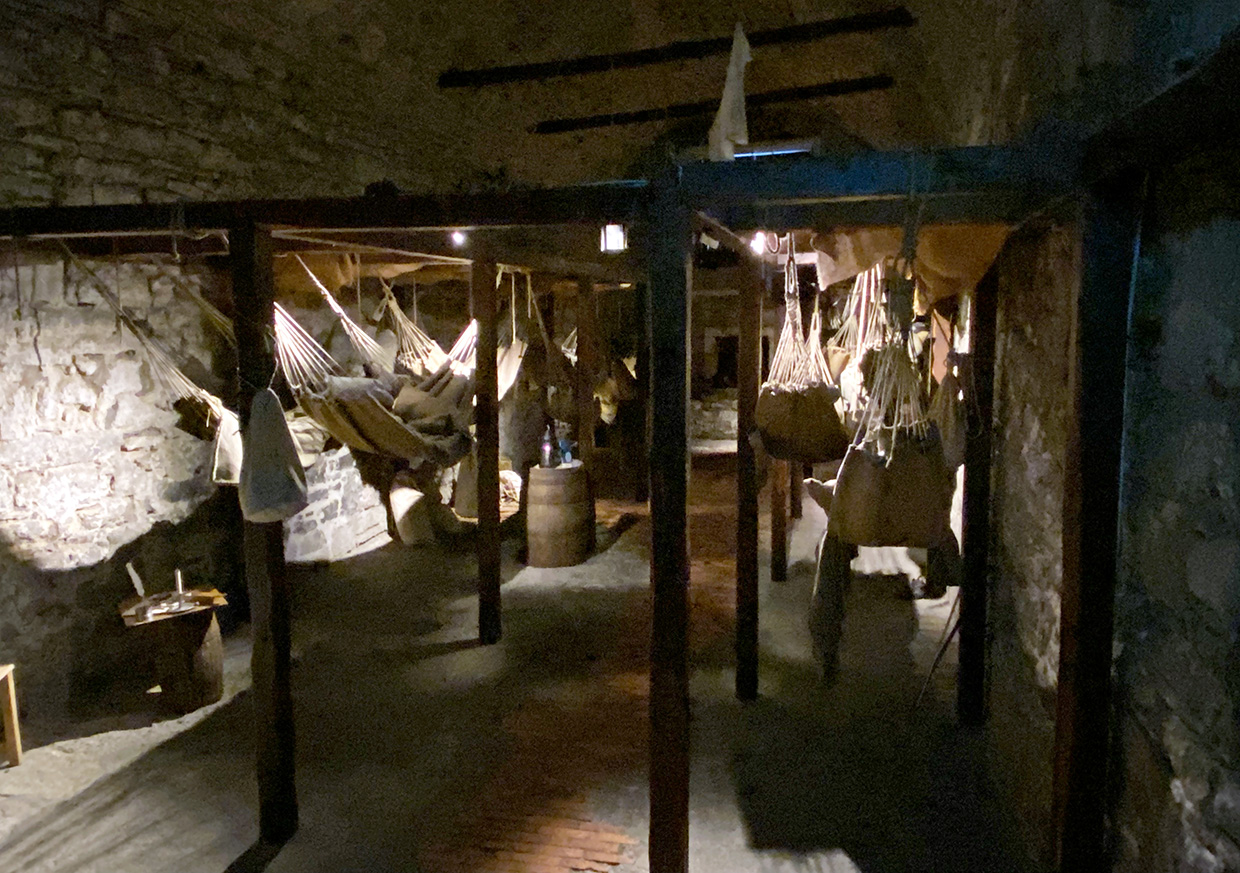
St Margaret’s Chapel
The oldest building in Edinburgh is very small but very important to Scottish history.
St Margaret’s Chapel dates from the time of King David I who reigned from 1124 to 1153.
He built this as a private chapel in the 1130’s for the royal family and dedicated it to his mother who eventually became a saint, Saint Margaret of Scotland in 1250.
She actually died in the castle in 1093.
This wee building has survived a lot of sieges and attacks.
And St Margaret’s Chapel was even used as a storage for gunpowder in the 1500’s.
In 1845 its heritage was rediscovered so it was restored and it returned to its original purpose as a chapel.
In fact, today St Margaret’s Chapel hosts religious services, baptisms and weddings.
It also serves as inspiration for the St Margaret’s Chapel Guild which is a group of women who have Margaret as a first or middle name.
This service oriented group continues in the footsteps of St Margaret who was a proponent of helping the poor.
The guild members put flowers in the chapel twice per week.
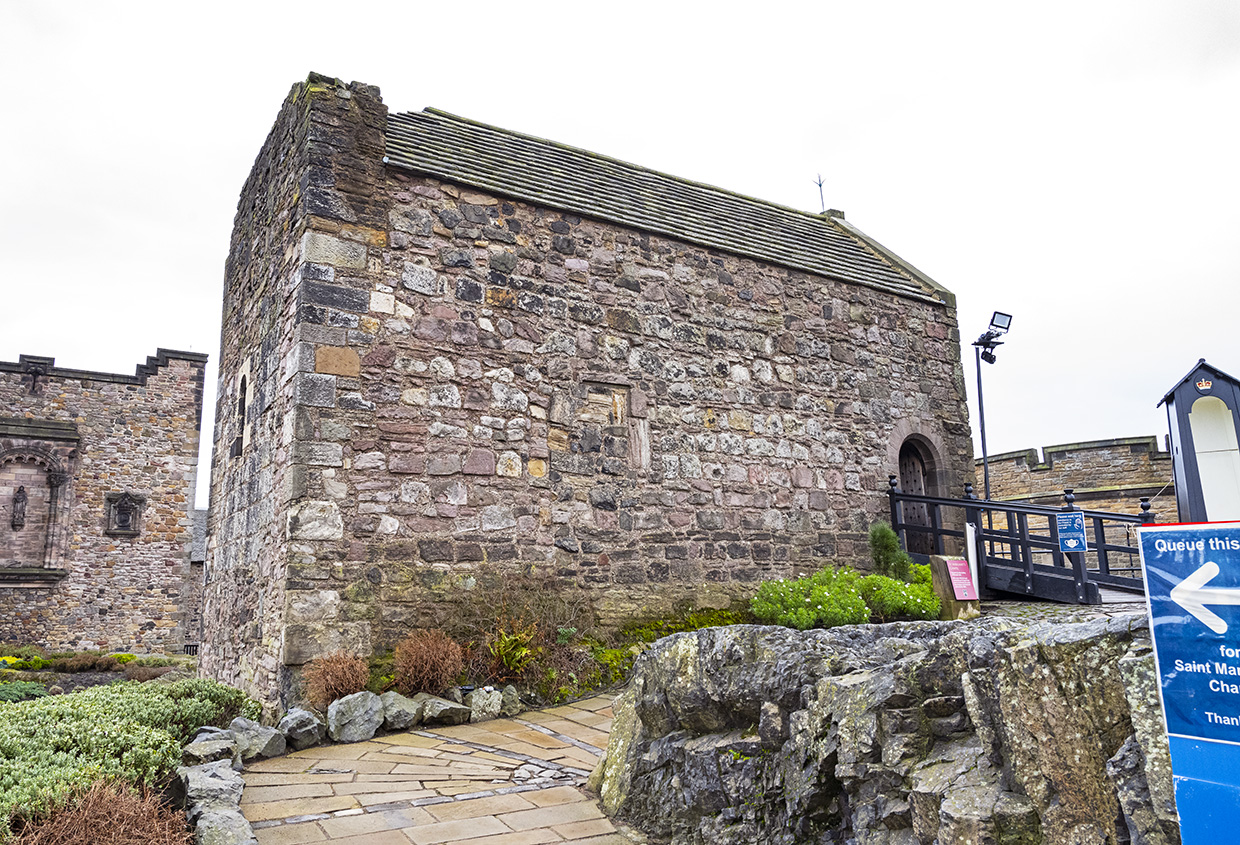
Mons Meg
Just outside St Margaret’s Chapel is Mons Meg — a siege weapon that was one of the most powerful weapons in Europe.
Interestingly it was a gift to King James II as a wedding gift in 1457.
It was commissioned in 1449 by the French Duke of Burgundy.
Mons Meg was a weapon of mass destruction for its day.
Although it was not an easy weapon to transport or fire!
Scottish National War Memorial
Sitting on the site where St Mary’s Church would have been when Edinburgh Castle was first built is the Scottish National War Memorial.
But before it became the National War Memorial the site was an armory and then a barracks.
It was in 1917, during WWI, that a proposal was put forth for the Scottish National War Memorial.
Sir Robert Lorimer was appointed the chief architect and the memorial was officially opened in July 1927 by the Prince of Wales, who was briefly King Edward VIII of England.
This is an absolutely beautiful building — one that also demands the quiet and respect because of what it stands for.
The Scottish National War Memorial is a tribute to all those who served in uniform and lost their lives from WWI to present day.
Over 200,000 lives.
Do take your time as you walk through this incredible memorial.
It is one of my favorite places in Edinburgh Castle.
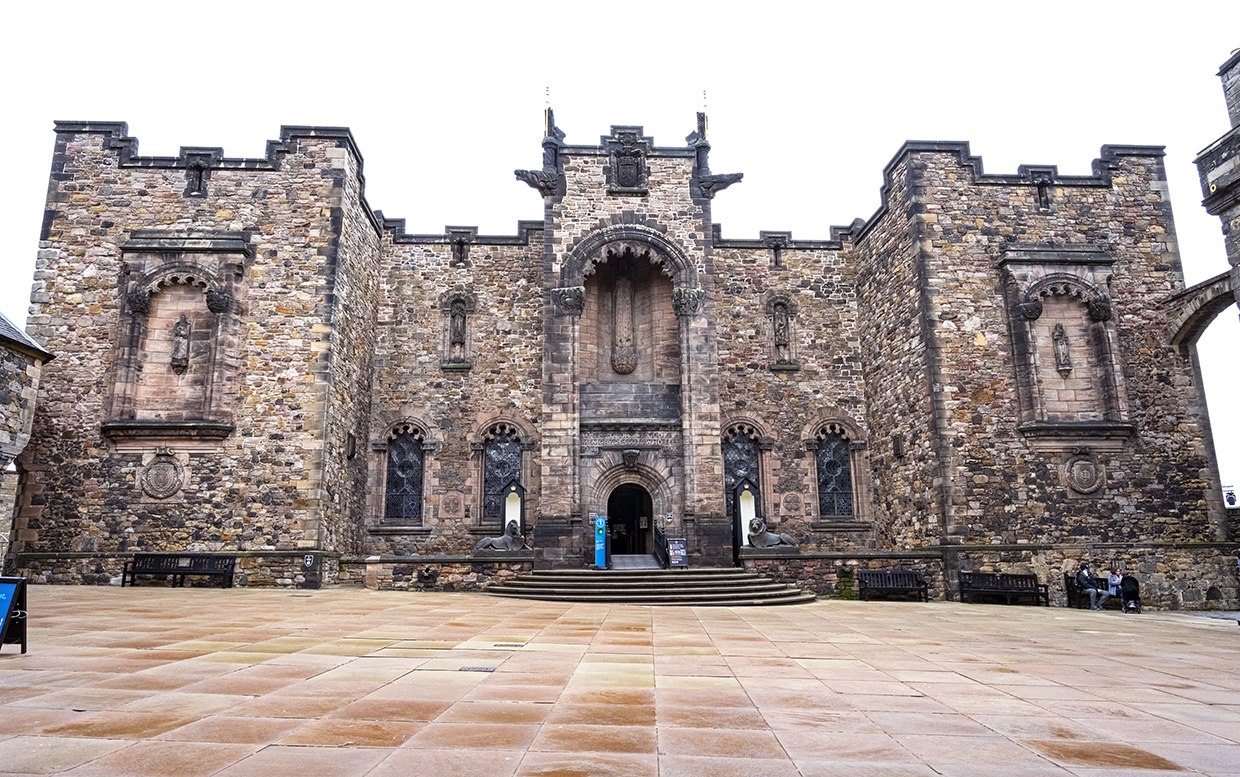
There is a lot more to Edinburgh Castle
Edinburgh Castle is pretty big with lots to see.
There are places such as the Museum of the Royal Scots and the Royal Regiment of Scotland, Half Moon Battery, David’s Tower, the Queen Anne Building and the Dog Cemetery.
This castle is impressive.
It’s a mix of outdoor and indoor sites and exhibitions.
The thing to keep in mind is that it really does feel more like a fortress and less of a palace.
If you want to see beautiful rooms with period furniture then I’d suggest something like Glamis Castle or Stirling Castle.
While I definitely enjoyed it I’m not sure I would have liked it as much with the crowds.
Which leads me to the final section of this post…
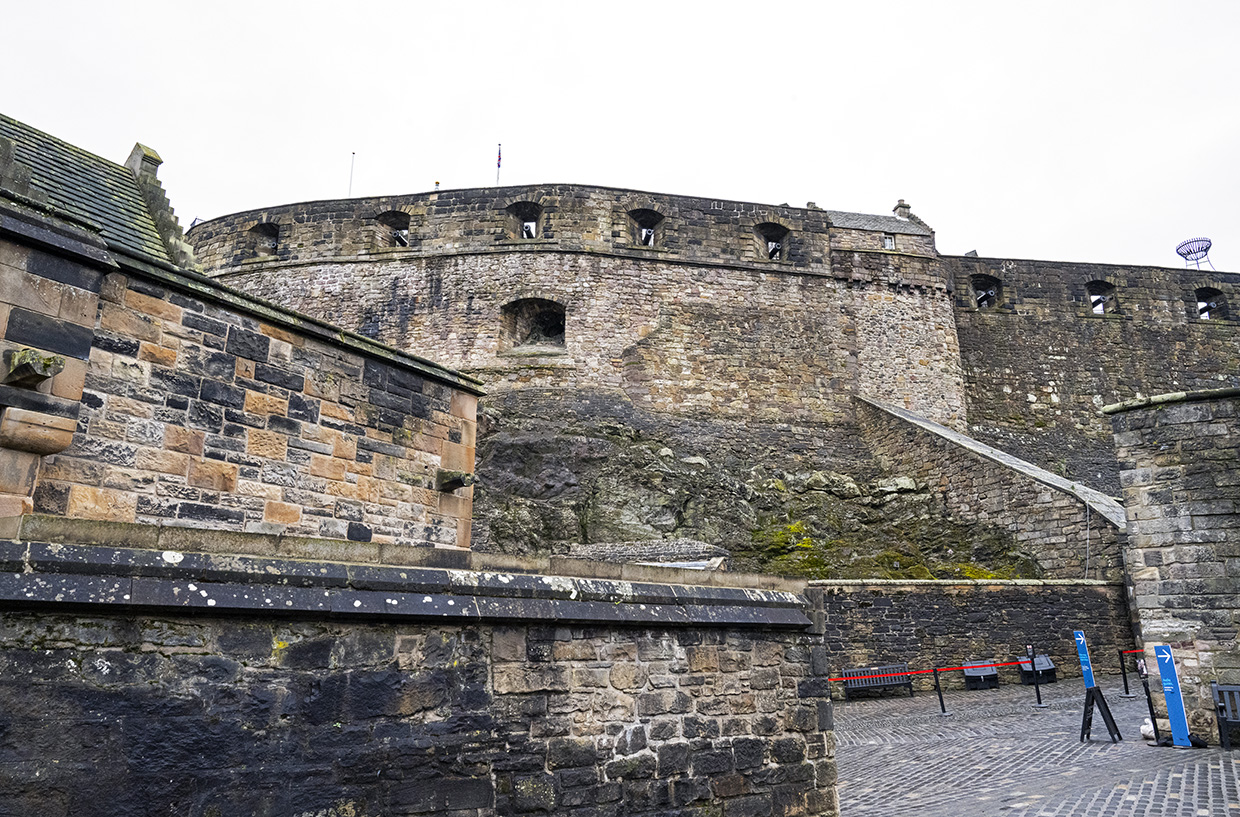
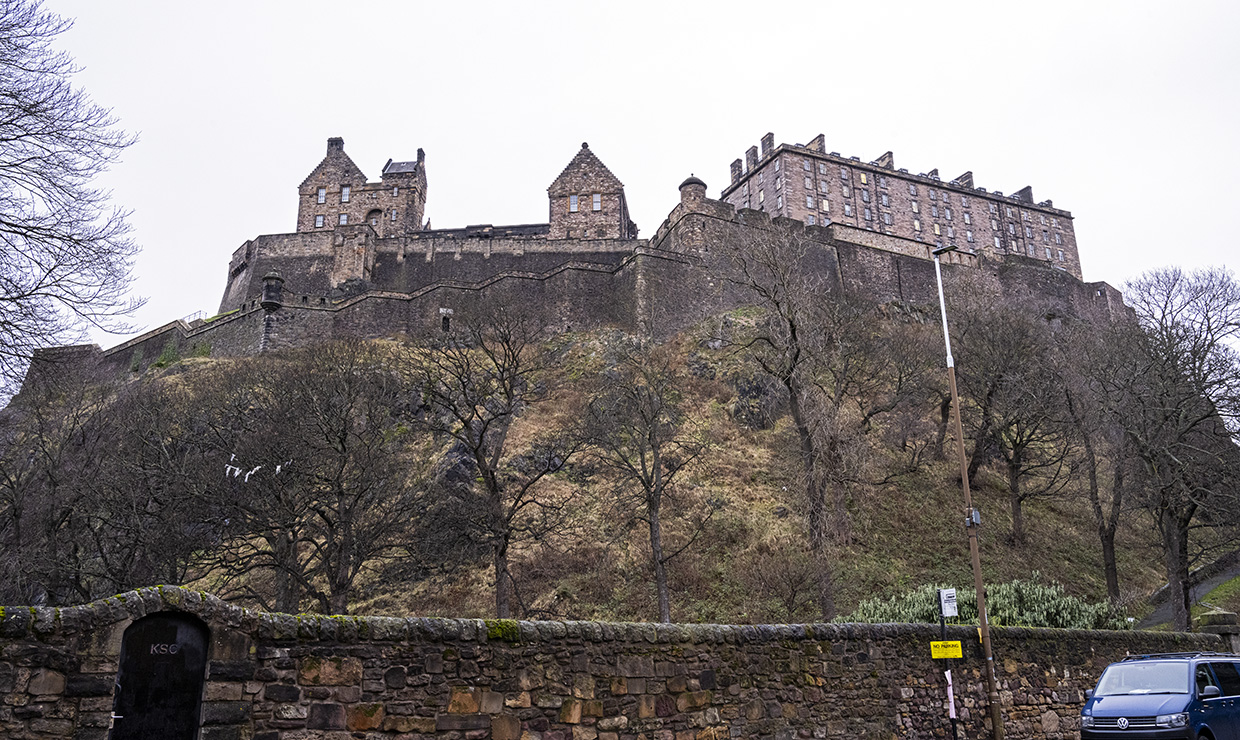
Tips for visiting Edinburgh Castle
As I mentioned at the beginning of this post, this is Scotland’s most visited site.
So if you want to visit, you do need to plan ahead.
First of all, I recommend visiting out of season if at all possible as you’ll have fewer crowds.
Secondly, as of now, you have to buy timed entrance tickets in advance on the website due to COVID.
I think they will continue this for the next year or so.
If you can, try to visit first thing in the morning so you can beeline to the crown jewels which is the most popular part of the site.
The second best time might be in those couple of hours right before closing.
Last entry is one hour before closing, but you’ll want at least 2 hours.
So try to time it out as the crowds may dissipate some at the end of the day.
I highly recommend using one of the castle guides to take you around or use the audio guide which is what I did.
An adult ticket is £15,50 and the audio guide an additional £3,50 which is worth it.
I downloaded the guide onto my mobile phone and had it ready to go when I got to the castle.
Easy peasy!
If you have to go in the height of summer be forewarned that the Edinburgh Military Tattoo is every August on the entrance grounds of Edinburgh Castle.
And they begin to set up for this a couple months in advance.
But if you want to go to this impressive event, do check it out and book well in advance.
I’ve had clients attend and they loved it!

Please note that Wander Your Way is only recommending international travel to those who are vaccinated and feel comfortable doing so. This is because travel to Europe is complicated.
If you do decide to travel internationally, please do your research or use a travel planning service such as Wander Your Way. Please stay up to date using official sources like the WHO and CDC.
I am continuing to write about incredible destinations and to offer tips on travel to Europe, so that you will find some solace in these posts — so you dream about travel and learn about places. And hopefully make that bucket list! This way when we can all fully travel again, you’ll be ready to go.
And if you are ready to go soon, please contact Lynne for any assistance you may need.
Disclaimer: This post contains affiliate links. This means I will earn a commission – at no extra cost to you — if you click on the link and purchase anything from these trusted companies. It helps Wander Your Way, a small business, stay in business. Thanks for your support!
Like it? Pin it!


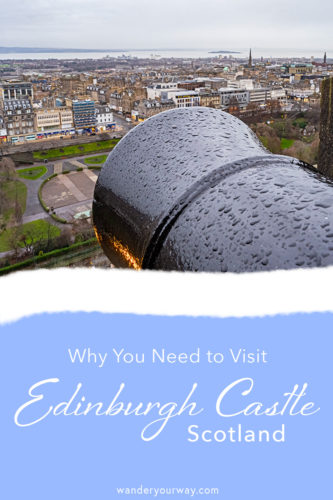

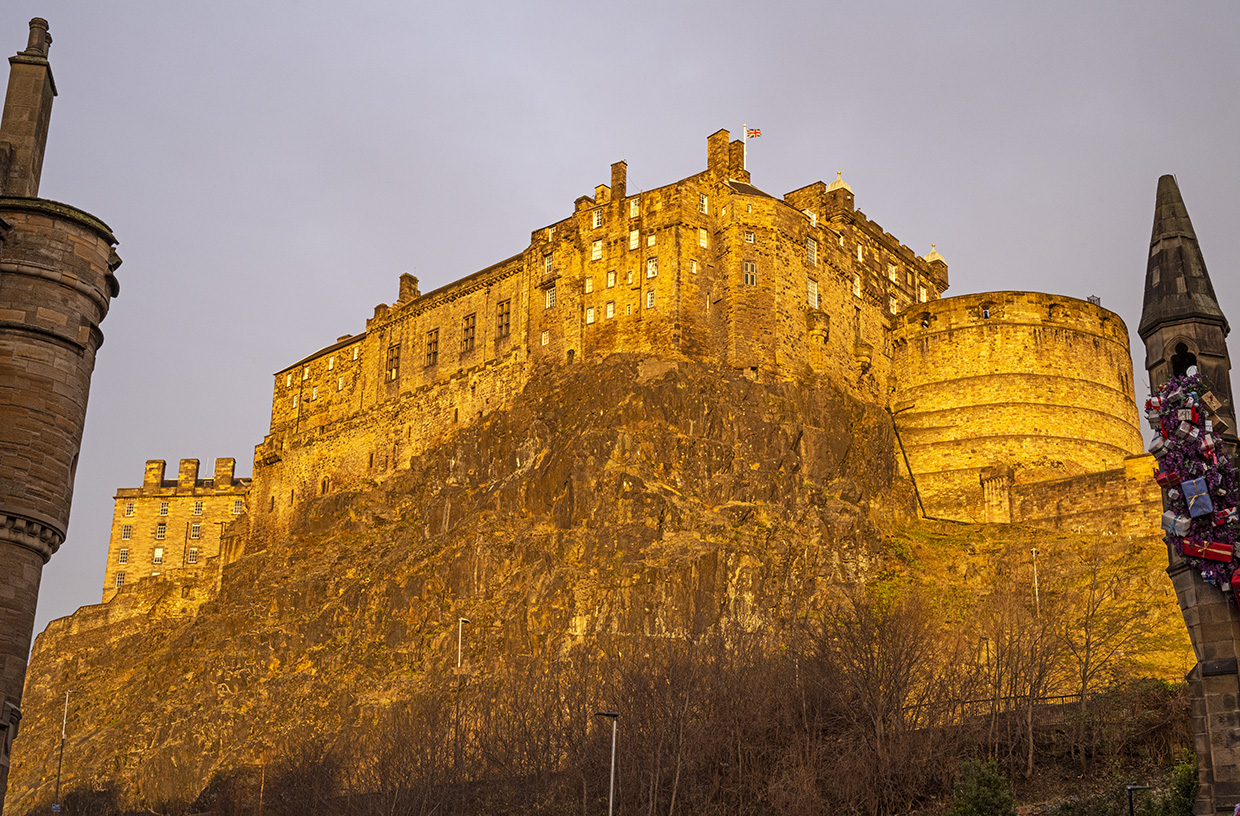







Great summary!
For info – Covid or no Covid, Edinburgh Castle has always worked a timed-ticket entry system, especially in the height of the season, and will continue to do so as a crowd management system. This is also true for some other popular attractions managed by Historic Environment Scotland (HES).
One other tip is that, if you are planning to visit other HES sites such as Stirling Castle, you may want to look at some of the multi-site ticketing options which you will find on their website – or even consider becoming a member. These are both ways of saving on entrance fees if more than one site will be visited during your trip!
Enjoy!
Thanks for the info Bo!